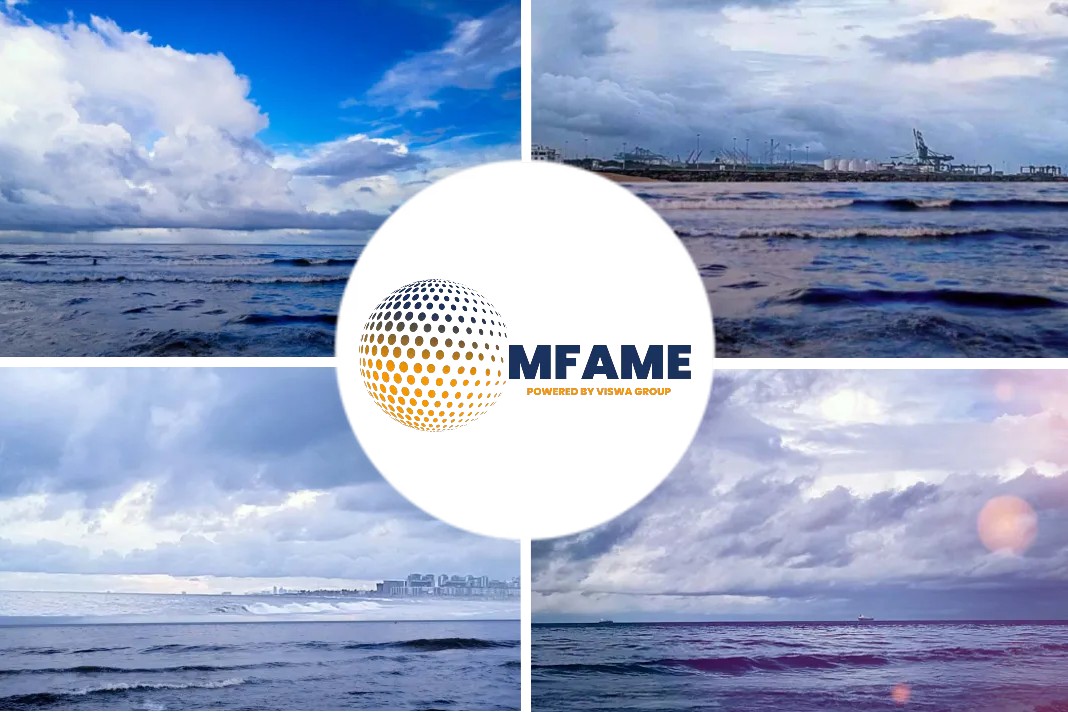Schulte Group has combined its proven experience as an LNG bunker vessel (LBV) owner and ship manager with Technolog’s extensive applied knowledge of naval architecture to develop an innovative LBV design that is easy-to-use, fulfils present and known future requirements for at-sea LNG bunker deliveries, and reduces last-mile costs.
The unique vessel design does away with the need for fenders and spacer pontoons. Usually, the rigging of fenders on-board a seagoing LBV takes one to two hours, with the engagement of a substantial deck crew. Schulte Group’s LBV avoids manually shifting, deploying and mooring the typically heavy inflatable fenders alongside the LBV. With the innovative outrigger system, it takes around five minutes with the single push of a button.
Furthermore, due to the increased distance between the vessels, the more favourable, less steep angles achieved with mooring ropes to a client vessel with high freeboard results in safer and easier moorings.The same applies to the telescopic crane, which extends 40 meters over the water and can be adjusted to any required reach. The vessel fits with all known and soon-to-come LNG-fuelled vessels.
It also features warming-up, gas freeing and aeration equipment to prepare LNG-fuelled vessels for dry dock, and flexible design options so that the LBV can be tailored to specific requirements. The bunker vessel can be operated by a smaller crew whilst still ensuring high safety standards.
All of these components are geared towards reducing CAPEX and OPEX costs for owners and operators, and ultimately will achieve low last-mile costs for the LNG fuel industry, including the LNG-fuelled client vessels.
A ‘work horse’ of LNG bunkering
Johan Lillieskold, Gas Solutions Specialist, LNG Competence Centre, at Schulte Group says: “We examined the market’s current requirements and recognised the need for a straightforward LNG fuelling ‘work horse’, that reduces the cost of last-mile delivery for vessel operators. We have gone back to the drawing board and defined the operational specifications of what the ideal LNG bunker vessel should offer, doing away with any additional or unnecessary gear and cumbersome operations.”
The LBV has been designed to maximise operational compatibility, including: vessels with protruding structures from the hull, such as those typically found on cruise liners with protruding lifeboats, deck structure and balconies; vessels with short bodies such as high-speed, slender container vessels; and those with high freeboards including large crude oil and bulk carriers.
LNG is an increasingly popular choice of fuel as owners and operators seek to reduce emissions from their ships’ operations. Some of the LNG bunkers are currently delivered from shore-based trucks to ships berthed alongside, and whilst these activities will still be available going forward, LNG sea-based deliveries will eventually dominate supply to merchant and cruise LNG-fuelled vessels.
Lillieskold says: “The number of LNG-fuelled vessels planned to enter into operation in the next few years is significant, as operators increasingly turn to LNG to reduce environmentally and climate-harmful emissions.” Lillieskold admits that typically cheaper than fuel oil, LNG prices are high right now, but when the LNG versus fuel oil market returns to normal, demand for LNG to fuel merchant vessels and the required infrastructure will follow. “The current arrangements for LNG bunkers, both land-based and sea-based, will not be sufficient or suitable for the increasing volume of LNG-fuelled tonnage planned for future years. This new flexible vessel design will serve both today’s tonnage and future new builds.”
Schulte Group’s LBV has been developed in accordance with the International Code of Safety for Ships Using Gases or Other Low-flashpoint Fuels (IGC) and other IMO regulations. It also complies with and is prepared for new and future decarbonising rules and regulations like the IMO’s Carbon Intensity Index (CII) and the EU’s Fit for 55 programmes.
Did you subscribe to our daily newsletter?
It’s Free! Click here to Subscribe!
Source: BSM






















